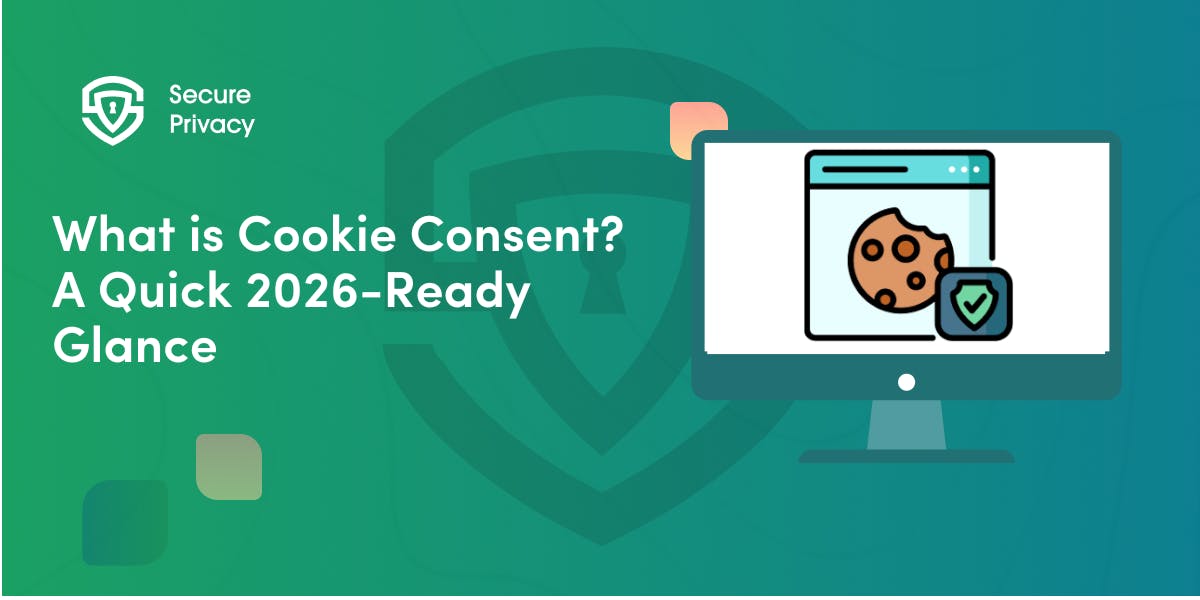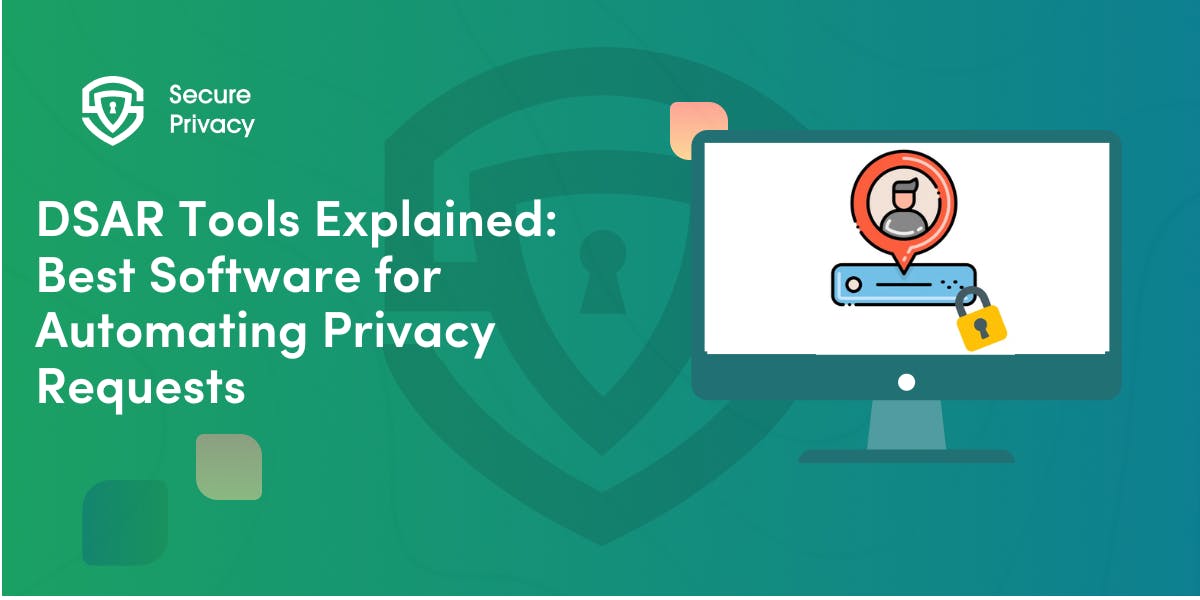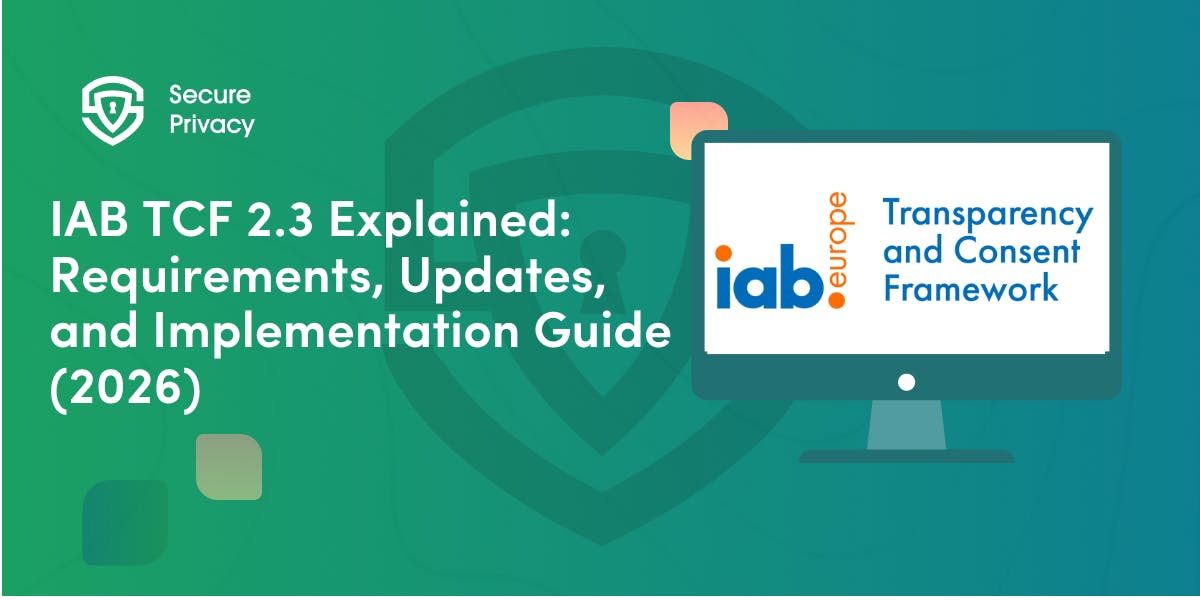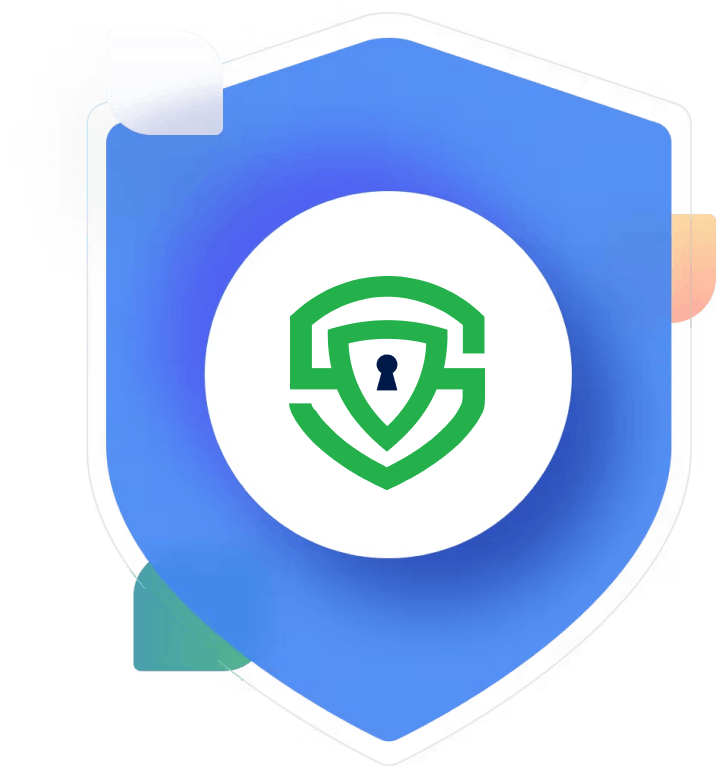Privacy Risk Assessment Module
Managing privacy risks has become critical for organizations in 2025. With data protection authorities issuing over €2.8 billion in GDPR fines since 2018, privacy risk assessment software helps companies identify threats before they become costly violations.
Privacy risk management platforms provide systematic approaches to evaluate data processing activities. They help organizations meet regulatory requirements while protecting sensitive information. Modern GDPR risk assessment tools go beyond basic compliance to create comprehensive risk management strategies.
The regulatory landscape demands proactive risk management. GDPR Article 35 requires Data Protection Impact Assessments for high-risk processing. Similar requirements exist in CCPA, ISO 27701, and emerging AI regulations. Organizations using manual spreadsheets struggle to keep pace with these evolving demands.
Understanding Privacy Risk Assessment Software
Privacy risk assessment software serves as a centralized system for identifying, categorizing, and mitigating privacy risks across organizations. These platforms support compliance efforts while creating accountability frameworks that satisfy regulatory authorities.
Modern data protection risk assessment modules integrate multiple functions:
Risk Identification: Automated scanning and manual input systems discover privacy risks in data processing activities, third-party relationships, and system configurations.
Impact Assessment: Structured evaluation frameworks measure potential harm to individuals and organizations using standardized scoring methodologies.
Mitigation Planning: Workflow systems help teams develop and implement appropriate safeguards and controls to reduce identified risks.
Accountability Tracking: Assignment and monitoring capabilities ensure responsible parties address risks within established timeframes.
These platforms work best when integrated into broader privacy governance programs such as Secure Privacy's very own governance platform. They provide the foundation for demonstrating compliance to regulators while enabling proactive risk management across complex data environments.
Step-by-Step Risk Assessment Process
Privacy risk management platforms streamline assessment workflows through intuitive interfaces and automated features. Here's how organizations typically use these systems:
Adding New Privacy Risks
Navigate to the risks module from your platform's main dashboard. Select "Add Risk" to begin creating a new assessment entry.
Enter comprehensive risk details including descriptive names, detailed explanations of potential privacy impacts, and risk categorization based on your organization's taxonomy. Most platforms provide dropdown menus for consistent categorization.
Choose appropriate risk types such as data breach, unauthorized access, inadequate consent, or vendor-related privacy risks. This categorization helps with reporting and trending analysis.
Conducting Risk Assessments
GDPR risk assessment tools typically use structured scoring methodologies. Assign likelihood ratings based on probability of occurrence using scales like "Very Low" to "Very High" or numerical ranges.
Evaluate potential impact considering harm to individuals, regulatory consequences, financial losses, and reputational damage. Advanced platforms calculate overall risk scores automatically based on these inputs.
Document your assessment rationale to support audit requirements and enable consistent evaluation approaches across your organization.
Planning Risk Mitigation
Identify specific measures to address each risk. These might include technical controls, policy updates, staff training, vendor contract modifications, or process improvements.
Automated privacy risk assessment tools often provide suggested mitigation options based on risk types and industry best practices. Customize these recommendations to fit your specific environment.
Set target completion dates and assign responsible team members for each mitigation measure. This creates accountability and enables progress tracking.
Tracking Implementation Progress
Monitor mitigation implementation through dashboard views and automated notifications. Most platforms send reminders as deadlines approach and allow status updates from assigned team members.
Conduct periodic reassessments to verify that implemented measures effectively reduce risks. Document changes in risk scores and update assessments as needed.
Generate reports for management and regulatory purposes showing risk reduction progress and overall program effectiveness.
Core Platform Features
Modern privacy risk management platforms offer comprehensive feature sets designed to support enterprise-scale risk assessment programs.
Risk Categorization and Prioritization
Advanced platforms provide multiple classification schemes including risk type, data category, processing purpose, and regulatory framework. This enables focused attention on highest-priority risks.
Built-in prioritization algorithms consider multiple factors including regulatory requirements, potential impact, and organizational risk tolerance. Some platforms offer customizable scoring matrices to align with internal risk management frameworks.
Assessment Templates and Automation
Data protection risk assessment modules include pre-built templates for common scenarios like Data Protection Impact Assessments, vendor evaluations, and new system implementations. These templates ensure consistent evaluation approaches while reducing manual effort.
AI-powered features can automatically populate assessment fields based on existing data inventories, processing activities records, and vendor databases. This automation significantly reduces time requirements for comprehensive assessments.
Mitigation Workflow Management
Structured workflows guide users through mitigation planning with task assignment, deadline tracking, and progress monitoring. Integration with project management tools enables seamless collaboration across teams.
Automated notifications ensure stakeholders stay informed about pending deadlines and status changes. Escalation procedures help manage overdue items and resource constraints.
Reporting and Analytics
Real-time dashboards provide executive-level visibility into risk posture with heat maps, trend analysis, and compliance status indicators. Customizable reports support both internal management and regulatory reporting requirements.
Advanced analytics capabilities identify patterns across risk assessments, highlight recurring issues, and provide insights for program improvement initiatives.
Common Implementation Use Cases
Organizations deploy privacy risk assessment software across multiple scenarios that demonstrate regulatory compliance and operational effectiveness.
Data Protection Impact Assessments
GDPR Article 35 mandates DPIAs for high-risk processing activities. GDPR risk assessment tools streamline this process through structured questionnaires, automated risk scoring, and standardized reporting formats.
These platforms help organizations determine when DPIAs are required going into 2026, guide stakeholders through comprehensive evaluations, and generate documentation that satisfies regulatory requirements.
New Technology Implementations
Organizations assess privacy risks before deploying new systems, applications, or processing activities. Risk assessment platforms provide frameworks for evaluating vendor privacy practices, data flow impacts, and control requirements. Privacy risk assessment is a mandatory ISO 27701 requirement for maintaining effective privacy governance across new initiatives and ongoing operations.
This proactive approach prevents privacy issues rather than addressing them after implementation, reducing both compliance costs and regulatory exposure.
Third-Party Vendor Evaluations
Privacy risk management platforms support systematic vendor risk assessments through standardized questionnaires, contract review workflows, and ongoing monitoring capabilities.
These evaluations help organizations understand vendor privacy practices, negotiate appropriate contractual protections, and monitor compliance throughout vendor relationships.
Regulatory Audit Preparation
Risk assessment platforms maintain comprehensive documentation that supports regulatory examinations and compliance audits. Structured reporting capabilities demonstrate systematic approaches to risk management.
Auditors can review risk identification methodologies, mitigation implementation progress, and ongoing monitoring activities through centralized platforms rather than scattered documentation.
Organizational Benefits
Privacy risk assessment software delivers measurable value through improved compliance outcomes, operational efficiency, and stakeholder confidence.
Regulatory Compliance Enhancement
Systematic risk assessment approaches help organizations meet regulatory requirements across multiple jurisdictions. GDPR, CCPA, ISO 27701, and other frameworks all emphasize risk-based compliance approaches.
Platforms provide standardized methodologies that ensure consistent evaluation approaches while maintaining flexibility for jurisdiction-specific requirements. This reduces compliance complexity for multinational organizations.
Operational Efficiency Improvements
Automated workflows eliminate manual processes that consume significant staff time. Organizations report up to 75% reduction in assessment completion time when moving from spreadsheet-based approaches to dedicated platforms.
Integration capabilities with existing privacy management tools create unified workflows that eliminate duplicate data entry and improve accuracy.
Stakeholder Confidence Building
Transparent risk management processes demonstrate organizational commitment to privacy protection. Board-level dashboards provide executives with visibility into privacy risk posture and mitigation progress.
External stakeholders including customers, partners, and regulators gain confidence through demonstrable risk management capabilities and comprehensive documentation.
Cost Reduction Through Prevention
Proactive risk identification prevents costly privacy incidents and regulatory penalties. Organizations avoiding single major privacy fines can justify platform investments through preventive value alone.
Early risk detection enables cost-effective mitigation implementation before issues escalate into expensive remediation efforts or regulatory enforcement actions.
Advanced Platform Capabilities
Leading privacy risk management platforms incorporate sophisticated features that address enterprise-scale complexity and regulatory evolution.
AI-Powered Risk Detection
Machine learning algorithms analyze data processing activities, system configurations, and organizational policies to identify potential privacy risks automatically. These capabilities supplement manual assessments with continuous monitoring.
AI features can detect data overexposure, unauthorized access patterns, and policy violations across complex IT environments. Some platforms monitor over 1,900 business applications for privacy risk indicators.
Real-Time Risk Monitoring
Traditional point-in-time assessments give way to continuous risk monitoring capabilities. Platforms integrate with IT infrastructure to detect configuration changes, data flow modifications, and access pattern anomalies.
Real-time monitoring enables immediate response to emerging risks rather than waiting for periodic assessment cycles. This approach significantly improves risk management effectiveness.
Cross-Platform Integration
Advanced platforms offer extensive integration capabilities with existing privacy tools, business applications, and IT infrastructure. These integrations create unified privacy management ecosystems.
API connectivity enables data sharing with Records of Processing Activities systems, consent management platforms, and incident response tools. This integration eliminates information silos and improves operational coordination.
Regulatory Adaptation
Platforms incorporate evolving regulatory requirements directly into assessment workflows. As new privacy laws emerge or existing regulations change, platforms update templates and evaluation criteria accordingly.
This automation ensures organizations maintain compliance with current requirements without manual template updates or process modifications.
Implementation Best Practices
Successful privacy risk assessment software deployment requires strategic planning, stakeholder engagement, and ongoing optimization.
Platform Selection Criteria
Evaluate automation capabilities that match organizational scale and complexity requirements. Enterprise platforms offer extensive customization but require longer implementation periods.
Consider regulatory coverage needs, particularly for organizations operating across multiple jurisdictions. Ensure platforms support relevant privacy frameworks and provide jurisdiction-specific guidance.
Assess integration requirements with existing privacy tools and business applications. Seamless integration reduces deployment complexity and improves user adoption.
Deployment Strategy
Start with pilot implementations focusing on specific use cases or organizational units. This approach enables learning and refinement before enterprise-wide deployment.
Provide comprehensive user training emphasizing workflow benefits and regulatory value. User adoption significantly impacts platform effectiveness and return on investment.
Establish clear governance procedures for risk assessment approval, mitigation planning, and progress monitoring. Defined processes ensure consistent platform usage across teams.
Ongoing Optimization
Conduct regular platform usage reviews to identify improvement opportunities and additional use cases. Most organizations discover new applications after initial deployment.
Monitor regulatory developments and platform updates to ensure continued compliance effectiveness. Vendors regularly enhance platforms based on regulatory evolution and user feedback.
Measure platform effectiveness through metrics like assessment completion time, risk reduction rates, and compliance audit outcomes. Use these measurements to guide optimization efforts.
Modern privacy risk assessment software transforms how organizations approach privacy risk management. These platforms enable systematic identification, evaluation, and mitigation of privacy risks while supporting regulatory compliance requirements.
Data protection risk assessment modules provide the foundation for proactive privacy governance programs. Organizations using these tools demonstrate regulatory compliance, reduce privacy incident likelihood, and build stakeholder confidence through transparent risk management approaches.
Get Started For Free with the
#1 Cookie Consent Platform.
No credit card required

What is Cookie Consent? A Quick 2026-Ready Glance
Your website loads. Cookies track users. But without proper cookie consent, you're violating GDPR — risking fines up to €20 million or 4% of global revenue. Cookie consent is the legally required mechanism by which websites obtain explicit user approval before deploying non-essential tracking technologies. This requirement stems from GDPR Article 4(11) and the ePrivacy Directive, mandating that consent must be freely given, specific, informed, and unambiguous.
- Legal & News

DSAR Tools Explained: Best Software for Automating Privacy Requests
You're drowning in data subject access requests. Manual searches through dozens of systems miss regulatory deadlines and expose organizations to fines starting at $2,500 per violation. The solution? DSAR tools — purpose-built software that automates the entire process of responding to data subject access requests, from intake to delivery.
- Legal & News

IAB TCF 2.3 Explained: Requirements, Updates, and Implementation Guide (2026)
Your ad revenue dropped 40% overnight. Google stopped bidding on your inventory. Your DSP partners flagged your traffic as non-compliant. The culprit? An outdated TCF 2.2 consent string after the February 2026 enforcement deadline.
- Legal & News
- Cookie Consent

